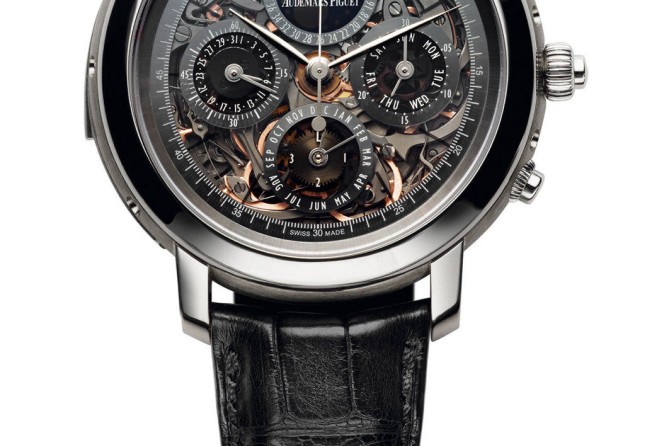

Abid Rahman



In watchmaking, creating a grand complication timepiece is similar in many ways to climbing Everest, in that there is no discernable reason for it, other than to prove to the world that these concoctions of engineering expertise can be made.
A grand complication watch is one which, loosely speaking, contains three or more of the most complex complications in a single timepiece. The grand complication is the apex of fine watchmaking and, as such, the prices are high, the number of pieces small and only the very best watchmakers ever attempt to make them.
Patek Philippe is one of these feted few watchmakers capable of creating grand complications. For 2012, the company has created the 5101J-001 grand complication (top right), which comes in a yellow-gold case measuring 29.6mm by 51.7mm. The main features are the frankly ludicrous 10-day power reserve (that's 240 hours) and 10-day tourbillon. The watch features two subdials, with small seconds counted at the six o'clock position and a power-reserve indicator at the 12 o'clock position. Given the name, the wonderful movement and the number of complications, the Patek Philippe 5101J-001 is priced at HK$2.68 million.
If there was a watchmaking equivalent of Hillary, at least in terms of scaling the heights of his profession, then that man would be Christophe Claret. The undisputed king of chime watches, Claret has lent his genius to a succession of the greatest Swiss ateliers, but these days he's making his own creations, and creation is the apt word when one considers watches such as the Rialto grand complication (below left). Priced at HK$2.13 million and released for sale this summer, the Rialto is a beautifully designed watch that artfully houses a plethora of complications.
Most visible of the complications is the open-dial tourbillon at the six o'clock position, but given the ubiquity of this complication these days, the attention turns to the instantaneous-jump perpetual calendar that cleverly indicates the day, date and month as well as correcting for leap years. On the back of the case, there is a moon phase indicator, and just to prove he can, Claret has added an equation-of-time indicator under the date display at the top of the dial - a rather archaic measure of the difference between true solar time and mean solar time. Coming in either white gold or red gold, the Rialto is limited to just 15 pieces.

There is a perpetual calendar indicating day, date, month and week of the year. There is also a moon phase indicator, a small seconds hand, a minute repeater and a chronograph. The power reserve for such a power-hungry watch is a remarkable 45 hours. Unsurprisingly, with the full orchestra of specifications found on the Jules Audemars Grande Complication, the watch is priced at HK$8.03 million - making it strictly for serious collectors only.